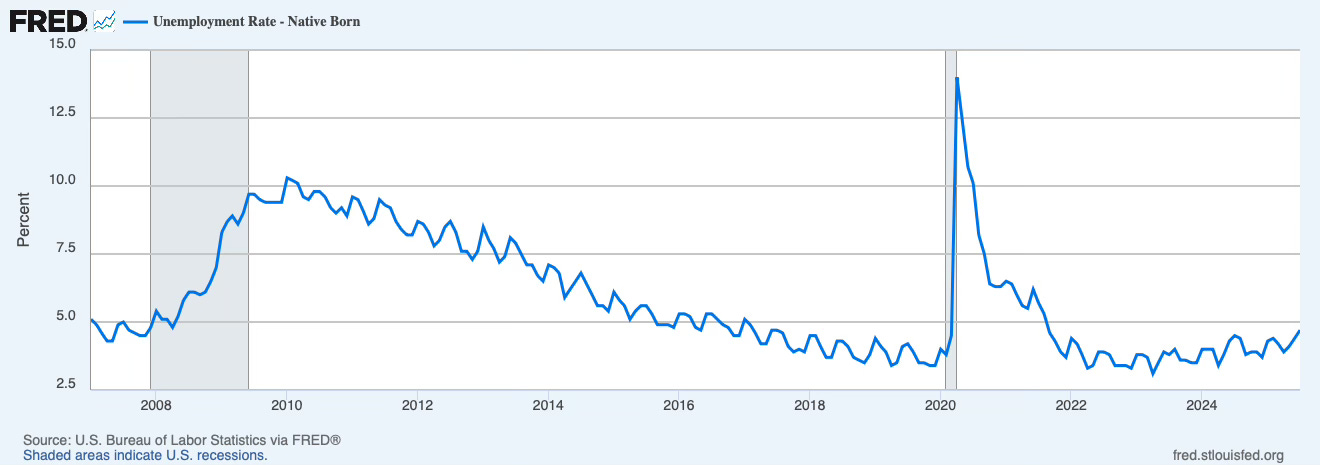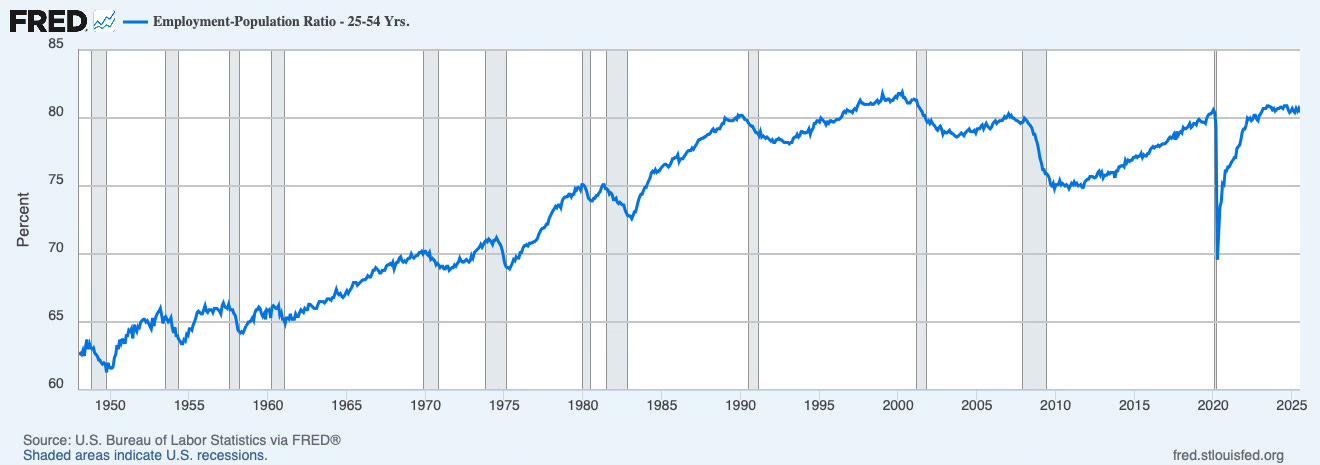Jobs on Paper, People Missing in Reality
CPS reset shifted headcounts without adding real jobs.
Primer: The Current Population Survey (CPS) is the household survey behind the jobs report; each January it resets population weights, which can move level counts without any new hiring.
Here’s what the January 2025 reset actually did:
Civilian noninstitutional population: +2,870,000
Labor force: +2,105,000
Employed (household survey): +2,001,000
Driver: population-control update, not new hiring.
Read the footnote the press skipped: BLS population control adjustments.
All in a single month. Rates ticked only 0.1 percentage point.
What was really going on: the CPS fixes the total, then the 60k-household sample allocates shares. Under-count the foreign-born, the native-born column inherits the difference. On paper it looks like a surge. In reality? Nothing moved.
2025 set the trap. Cooler immigration climate. More attrition, more nonresponse, more misclassification among the foreign-born. With the January total locked, the missing foreign-born headcount leaked into the native-born column. Apparent surge. Not an actual hiring wave.
Reading the level chart straight means this: U.S.-born adults multiplied on paper between Feb and Jul. They didn’t.
Clean explainer hit the same point: No, Native-Born Employment Has Not Soared.
Use ratios. Native-born unemployment in July 2025: 4.7%. Highest since 2021. Up from 4.5% in July 2024.

Source table for the number people argue about: BLS Table A-7.
Prime-age employment-to-population ratio (25–54): 80.4% in July 2025. Off the spring highs.

The numbers you can’t fudge: Hard count that resists spin. Native-born nonworkers—unemployed plus not in the labor force—rose by ~2,961,000 year-over-year. July 2024: 89.28 million. July 2025: 92.24 million. Same definitions, same table: BLS Table A-7.
The CPS wasn’t designed to hand out applause lines. It was designed to measure. Read it as measurement, not story.
Details: Census CPS overview.



The trap isn’t just in the numbers — it’s in how they get weaponized. A statistical adjustment gets spun into a narrative about who’s ‘winning’ or ‘losing’ jobs. That isn’t measurement, it’s theater. And theater is how policy gets justified.